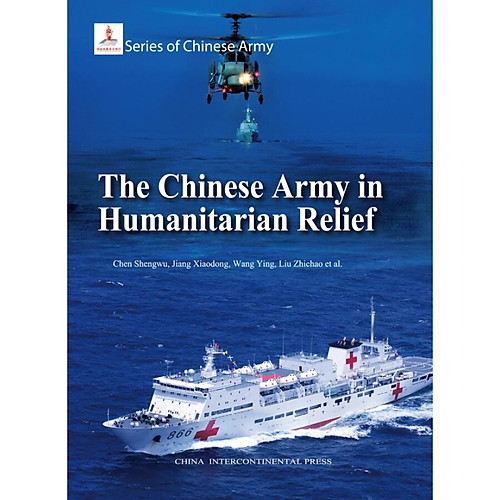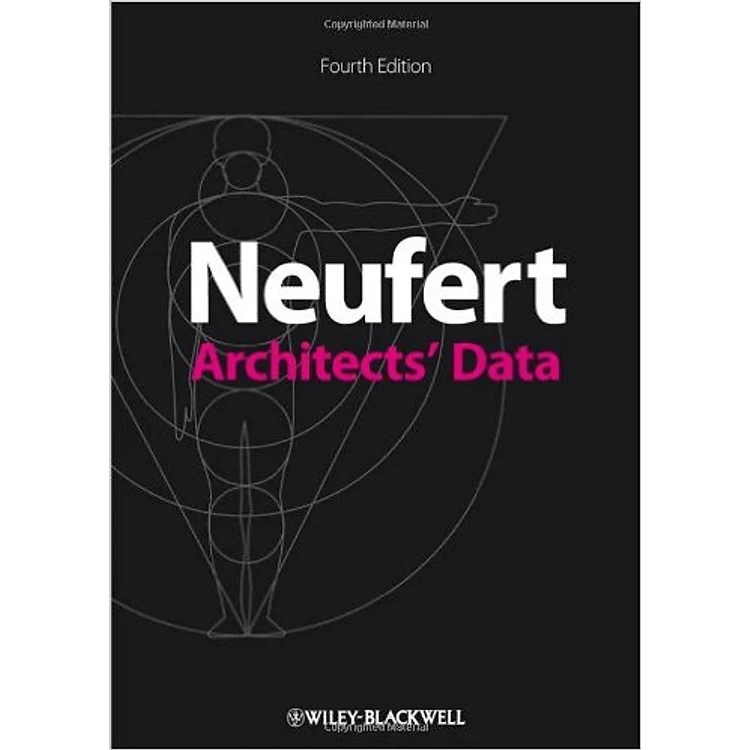Description
Thông tin chi tiết về The Chinese Army in Humanitarian Relief
| SKU | 4821264080067 |
Through eleven groups of stories and a number of pictures, the book PLA Forces in Humanitarian Relief Operations vividly displays the development history of the Chinese PLA’s cause of humanitarian relief, and presents the great contributions that the PLA has made in the field of domestic and overseas humanitarian relief. Those valiant and selfless Chinese soldiers who defied personal dangers to save lives and properties have touched us a thousand times.
There are ten books in the series on PLA China, namely The Chinese People’s Liberation Army, The PLA Navy, The PLA Air Force, The PLA Army Aviation Corps, The PLA Marines, The Chinese Navy’s Maritime Escort Operations, The PLAAF Airborne Troops, Chinese Peacekeepers Overseas, The Chinese Army in International Exchanges, as well as The Chinese Army in Humanitarian Relief. The length of each book ranges from 50,000 to 100,000 Chinese characters, with hundreds of valuable pictures. The series attempts to focus on the Chinese armed forces’ history, current situation and future development in the context of its growth through the use of many interesting examples and details, to show the overall face of the People’s Liberation Army from multiple angles.
This publication, PLA Forces in Humanitarian Relief Operations, through its many valuable historical records and its elaboration of details, presents the outstanding capabilities of the Chinese military forces in carrying out the most urgent, arduous and dangerous rescue missions that they showed in the various major disaster relief and emergency response operations, domestic or overseas. The whole book falls into two parts, which respectively involve the domestic or overseas relief operations. With a series of storiettes presented, it gives a vivid account of eleven humanitarian relief operations, highlighting the PLA’s inherent qualities of “serving the people heart and soul” and their great love of respecting life and care for peace.
Chen Shengwu, associate professor at Shijiazhuang Army Command College.
CONTENTS
Preface 1
Acronyms and Abbreviations 1
Introduction 1
PART I
Chapter 1
The 100,000 Troops on the Ruins 3
Flying to Report the Disaster Situation 5
The On-Scene and Nearby Rescue 8
Rushing to the Rescue by Land 9
The Ultra-Dense Takeoffs and Landings 11
The Medical Assistance beyond the Limits 15
The Exhausted Soldiers 18
For the Lifeline of the Disaster-Stricken Area 20
Chapter 2
The Fire in the Primeval Forest 25
The Burst of the Forest Fires 25
The Mohe Town in the Flames 28
Defending Tahe 30
The Beardy Division Commander 32
Encircling the Fire 34
Meeting with a Danger in the Fire 35
Continuing the Triumphant Pursuit 37
Chapter 3
When the Flood Came 41
The Unissued Order of Flood Diversion 42
The Rustling Assault Boat 47
The Danger is the Order 50
The Life-or-Death Moment in Paizhouwan 52
Blocking Up the Levee Breach in Jiujiang 55
Defending Harbin to the Last 59
Chapter 4
The Snowy Spring 63
Opening Up the Way Home 64
The Gas Jet Cars 67
Delivering Warmth in the Snow 69
Wei Yongjing the Hero 71
Power! Power! 76
The Soldiers Standing Asleep 79
Chapter 5
The Earthshaking Fight in Wenchuan 83
Disaster Befalling the Northwestern Sichuan 83
The Army-Wide Mobilization of Forces 86
The Life-or-Death Air Rescue 89
The Arduous March Borne with Explosives 94
The Relief Operations in Beichuan 97
The Blue Wristlets 100
“I Don’t Want to Hear about Difficulties” 103
Saving Barcus Bogdan 108
Chapter 6
The Smashed Plateau City 111
The Emergency Takeoff of “Citation 4101” 111
Sending the Wounded Patients Out 113
The Child Born at the Airport 115
Standing Fast to the Last Post 116
“The Jinzhumami Will Come to Save Me” 118
You’re the Mother of the Kid 119
“We Are Not Only Recovering Cultural Relics” 121
The Agony of Abandoning the Battle Steeds 124
The Hans and Tibetans Are a Family 127
PART II
Chapter 7
The Unusual Operations during the SARS 131
Starting Out at Once 131
The Special Medicines 133
The Setback at the Airport 135
Our Job is to Give Them Hope 137
“The Disaster Relief Stars” 142
“I Don’t Know Careful” 144
The Tape and the Conch 145
Chapter 8
The Indian Ocean Is Weeping 149
Going to the Tsunami-Stricken Areas 150
The Tortuous Flight 152
The Long Wait 154
The Rescue in the Rainstorm 156
“China Is Very Tall in My Mind” 158
I’ll Let Them Rest in Peace 162
A False Alarm 163
With Dreams in Mind We’ll Have Tomorrow 165
Chapter 9
The Call from Balocot 169
Racing against the Time 170
The Hope of Life 172
The Messengers Sent by Allah 176
The Beautiful Chinese Woman Doctor 177
We Don’t Have Any Time Holding an Umbrella 178
The Multinational Base 180
Making Medical Rounds along the Wolf Road 182
“China Is Back Again” 184
Chapter 10
The Love to the People on the Other Side of the Earth 187
The Urgent Departure 188
Comrades, Let Us Take You Home 189
The 200% Effort 192
Breaking Away from the Convention 194
The Common Undertaking 196
The Intensive Treatment 199
The Revealed Emotions 202
Chapter 11
The Vibration in East Japan 205
The Shadow of the Nuclear Radiation 206
The Magic Effect of the Golf Clubs 209
Never Giving Up Any Hope 210
The 300 Micro-Blog Messages 212
The Sincere Gratitude 214
The Permanent Reminisce 216
Concluding Remarks 219
References 225
Postscript 228
The Setback at the Airport
As Beijing was then an epidemic area of SARS and doctors were the high-risk population that often contacted the SARS patients directly, the entry visas of various countries were stricter than normal times. Particularly approved by the Algerian Government, the CISAR got the special visa to enter Algeria. But for caution’s sake, and to ensure the SARS disease would not be brought into Algeria, the Chinese Government required that all the CISAR members should, besides accepting routine security checks, make rigid health condition declaration and receive numerous body temperature measurements.
Dr. Peng Bibo got ill. It was unknown whether it was because of the hot whether or because he was too tired after getting ready the vaccines. This man, who was in very good health at ordinary times, was found to have a body temperature of over 37℃ on the screen of the electronic body temperature monitor when he received the physical examination. Once, twice, three times, the common red numbers became so fearsome, and sweat was pearling over his forehead.
“Low fever!” In the SARS period, anybody associated with these words would keep all others around far away from him. The task-specific Boeing 767 was standing by on the apron, and the huge roars of the engines had sounded up. Everybody present was looking at Peng Bibo, anxiously but solicitously.
When the external environment changes suddenly, the physical and psychological state of the human body will be in a stress state and the secretion of hormones will increase or decrease correspondingly, and the body temperature may fluctuate thereupon. Injected with active vaccines such as cholera vaccine, encephalitis vaccine or hepatitis B vaccine, the human cells will accept or refuse the active ingredients in the vaccines. And for different personal physiques, symptoms of body temperature fluctuation or nausea may arise within 48 hours.
Wang Faqiang, president of the PAPF General Hospital who was seeing them off, carefully inquired about and verified Peng’s body temperature checks, his working situation and his routine over the week, and combined with his clinical experience in treating SARS, he judged that Peng Bibo was very unlikely to have been infected with SARS. “Sit quietly and breathe deeply.” Peng Bibo sat in a corner alone, trying hard to calm down the surging emotions and thoughts. After he became calm, he received a test again and his body temperature recovered back to normal. Then the special plane for relief operations flew away in the eyesight of the people present.
……
Preface
Since the start of the 21st century, along with the rise of China’s overall national and military strength, China’s defense policies, military strategy and military development have increasingly become a hot spot of the world’s attention, and many books have been published overseas about the Chinese armed forces. Unfortunately, as some of the authors lack accurate first-hand information, some of their publications have been somewhat debatable.
What kind of a military is the People’s Liberation Army (PLA)? In what developmental stage are the various branches of the Chinese armed forces? To what level have China’s military armaments been developed? All these questions have aroused high attention from the international community and heated discussion among some overseas and domestic media. For this reason, we believe that writing a series of books to give a vivid and accurate introduction to the Chinese military, for both domestic and foreign readers, would be of tremendous significance.
There are three books in the first series on PLA China, namely The Chinese People’s Liberation Army, The PLA Navy, and The PLA Air Force; the three in the second series include The PLA Army Aviation Corps, The PLA Marines and The PLAAF Airborne Troops and the third series contains four volumes: The Chinese Navy’s Maritime Escort Operations, Chinese Peacekeepers Overseas, The Chinese Army in International Exchanges, as well as The Chinese Army in Humanitarian Relief. The length of each book ranges from 50,000 to 100,000 Chinese characters, with hundreds of valuable pictures. The series attempts to focus on the Chinese armed forces’ history, current situation and future development in the context of its growth through the use of many interesting examples and details, to show the overall face of the People’s Liberation Army from multiple angles.
Throughout the process of planning and writing the series, we invited the participation of experts from relevant PLA functional departments, military academies, and research institutions for the purpose to ensure its authority and accuracy. This series has also had strong support and guidance from the Information Office of the Ministry of National Defense. We believe that the active participation of the military personnel has made the series much more profound.
Last but not least, any kind comment, criticism or advice from you on this Series is welcome. Once received, they will be deeply appreciated and highly valued, and will be taken into grave consideration in the subsequent perfection of this Series of publications.
The Editors
May 2015
























Reviews
Clear filtersThere are no reviews yet.